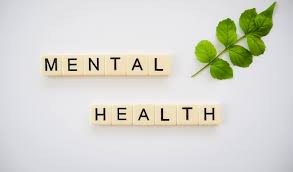Last updated on March 25th, 2024 at 11:00 pm
Sleep apnea is no laughing matter. It causes you to stop breathing while sleeping, which can be dangerous. It’s also the most common sleep disorder in the United States. In fact, data shows that around 30 million Americans have sleep apnea problems. However, only 6 million are diagnosed with it.
If you’re struggling with this sleep disorder, this guide is where you can find the solution to your problem. In this article, we will discuss different ways to overcome sleep apnea problems.
Table of Contents
What is Sleep Apnea?
Sleep apnea is a breathing disorder that can disrupt your breathing when sleeping. It can lead to pauses or shallow breaths, impacting your sleep quality because of low oxygen in your body. This can further lead to daytime fatigue, poor concentration, and memory problems.
This disorder has many symptoms, including loud snoring, restless sleep, and waking up with a dry mouth or sore throat. Those who suffer from severe cases may experience headaches because of decreased oxygen levels throughout the night.
They may experience memory loss due to interrupted REM (rapid eye movement) cycles. According to an article from Sleep Foundation, most adults need 2 hours of REM sleep every night. If you don’t get enough REM sleep due to apnea, it can result in cognitive problems like memory loss.
How to Overcome Sleep Apnea
Your diagnosis of sleep apnea will be made by a sleep study, which typically lasts around eight hours. If you have been diagnosed with sleep apnea, there are several things you can do to overcome the problem.
Continuous Positive Airway Pressure (CPAP)
Continuous Positive Airway Pressure (CPAP) is a treatment for sleep apnea. According to Mattress Verdict, it’s a machine that blows air into your nose to keep your airways open. This helps promote better breathing while sleeping to minimize apnea symptoms.
It is one of the most effective treatments for apnea and can be used by people with mild to severe cases. In fact, most people facing the problem use CPAP to overcome the challenge. According to Forbes, even President Biden uses this method, as he has been battling sleep apnea for a long time now. This was revealed due to the marks of the mask strap left on either side of his face.
The idea behind CPAP is simple. Suppose you have trouble breathing at night because of an obstruction in one or both of your windpipes. In that case, blowing extra oxygen into them should help clear things out and allow normal breathing. That’s why doctors recommend this type of treatment for children and adults suffering from obstructive sleep apnea.
Two other such methods are available: Bilevel Positive Airway Pressure (BiPAP) and Automatic Positive Airway Pressure (APAP). The difference between the three methods is in how they provide positive airway pressure.
CPAP pushes air in and out at a consistent level. On the other hand, BiPAP pushes air at a higher pressure when inhaling and at a lower pressure when exhaling. Lastly, APAP automatically changes the pressure based on your breathing needs.
All three methods aim to achieve the same thing. However, when you compare CPAP vs. BiPAP vs. APAP, CPAP wins because it is the most widely used option. However, BiPAP and APAP can also be helpful based on your requirements.
Adaptive Servo-Ventilation (ASV) for Sleep Apnea Treatment
Adaptive Servo Ventilation (ASV) is a treatment for sleep apnea. It’s not a new procedure, but it does provide an alternative to CPAP therapy that some people prefer.
ASV is a machine that helps you breathe while sleeping by adjusting the air pressure in your throat. The device works with you to help you breathe by adjusting its settings based on how well it senses that you’re breathing. This ensures smooth transitions between breaths without disturbing your rest or waking up because of discomfort.
Positional Therapy for Sleep Apnea Treatment
Positional therapy for sleep apnea treatment is a great way to help you sleep more comfortably. This technique involves sleeping on your side instead of your back, which makes it easier for the airways to stay open. A wedge pillow can elevate your head and body so that gravity does not pull them into an unnatural position.
A chin strap will also keep your mouth closed during sleep. This keeps sound from escaping through the throat as much as possible and helps prevent snoring and obstructive apnea episodes (OAs).
Alternatively, sleeping on your stomach can help with sleep apnea if you have GERD (gastroesophageal reflux disease). Recent studies show that apnea and GERD can be associated with each other. In fact, data shows that almost 40-60% of sleep apnea patients also have GERD, where acid reflux occurs at night. In such cases, lying on your back can worsen symptoms such as heartburn or acid reflux disease (ARD).
Lifestyle Changes for Better Sleep
The sleep hygiene strategies below are simple but can make a big difference.
- Avoid caffeine and alcohol. Coffee, tea, soda, and other caffeinated beverages can keep you awake at night. Alcohol may help you fall asleep faster but disrupts the quality of your sleep later in the night by causing frequent awakenings.
- Avoid nicotine products like cigarettes or e-cigarettes before bedtime. They’re stimulants that make it difficult to fall asleep quickly or stay asleep through the night. In a recent survey, it was found that smoking was associated with increased insomnia. The odds ratio was revealed to be 2.5. Nighttime smoking made it even worse.
- Eat dinner early enough, so your last meal is at least 2 hours before bedtime. Eating too late at night leads to weight gain because it disrupts your circadian rhythm. It also causes heartburn if eaten right before going to bed. This can cause further problems getting restful sleep and pain during waking hours!
Coping Strategies and Support
You can also follow the support and coping strategies below to fight sleep apnea problems.
- Talk to your family and friends about your symptoms. They can help you feel more supported and less alone.
- Consider cognitive behavioral therapy (CBT) to understand your body’s reactions to stress. CBT can also help you understand how to change unhealthy behaviors contributing to your sleep problems.
- Practice meditation or relaxation techniques before bedtime. For example, take deep breaths while focusing on one aspect of your environment at a time.
- Stress management practices like yoga or tai chi can also reduce tension in the body. They can help you relax enough so that you’re able to fall asleep at night without difficulty.
Related Articles:
Latest Trends in Anxiety And ADHD Management
How to Overcome Parental Anxiety
Conclusion
The bottom line is that sleep apnea is a severe condition. If you are experiencing any of the symptoms listed above, you must see your doctor immediately. If left untreated, sleep apnea can lead to many health problems, including high blood pressure, heart disease, and even death.







